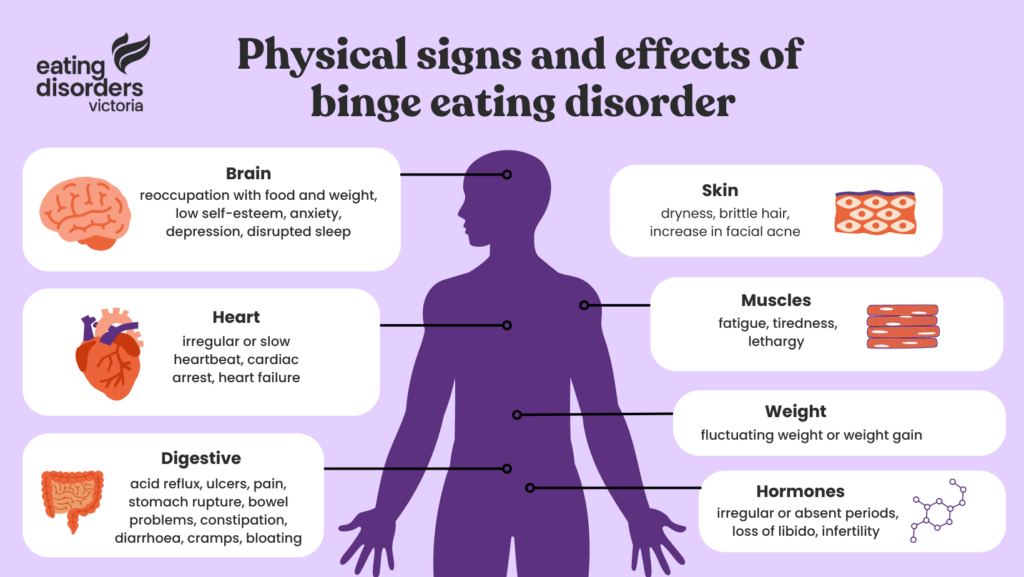Binge Eating Disorder (BED): Definition, Symptoms, Causes, and Treatment Options
What is Binge Eating Disorder?
Binge Eating Disorder (BED) is a serious eating disorder characterized by recurring episodes of binge eating, accompanied by feelings of loss of control, guilt, and shame. It’s not just about overeating - it’s a complex mental health condition affecting emotional well-being, physical health, and relationships.
Individuals with BED often have a strong emotional connection to food, using it to cope with stress and negative emotions, which can lead to frequent binge eating episodes, even multiple times a day. Secrecy is common, with individuals often going to great lengths to hide their behaviors from loved ones.
BED has several mental and physical health consequences, including weight gain and associated chronic conditions like diabetes and heart disease, as well as mental health issues such as depression and anxiety.

Understanding and Context of Binge Eating Disorder
BED was recognized as a distinct disorder in 2013 by the American Psychiatric Association in the DSM-5. Its classification as a behavioral disorder distinguishes it from other eating disorders.
Binge eating episodes often occur due to stress or emotional triggers, leading individuals to feeling self-loathing and anxiety.
Recent statistics reveal that about 2.8 million adults in the U.S. are affected, with a higher prevalence in women and individuals with histories of trauma.
Related Terms and Concepts
Understanding related terms such as disordered eating, emotional eating, food addiction, and mindful eating can deepen comprehension of BED. Mindful eating practices, including techniques provided by tools available in the GoblinX app, can help individuals foster healthier eating habits.
Causes and Risk Factors
The causes of BED are multifaceted, involving biological predisposition, psychological influences, sociocultural pressures, and environmental factors, such as trauma.
Research indicates a genetic component, along with psychological overlapping conditions like anxiety and depression.
Symptoms and Diagnosis
Primary symptoms include frequent binge episodes marked by feelings of loss of control and guilt. Diagnosis can involve assessments based on DSM-5 criteria and other evaluations by health professionals.
Treatment and Management
Effective treatment strategies include cognitive-behavioral therapy (CBT), nutrition counseling, and medication, complemented by programs like those found in GoblinX, which offer assistance for managing anxiety and ADHD that often co-exist with BED.
Prevention Strategies
Preventing BED involves early education regarding healthy eating and emotional regulation, promoting family dynamics that support positive eating habits, and fostering media literacy and positive body image.
Important Sources
| Binge-eating disorder - Symptoms and causes - Mayo Clinic | Binge-eating disorder involves feeling out of control and eating large amounts of food... |
| Binge Eating Disorder: What It Is, Symptoms & Treatments | Binge eating disorder (BED) is a behavioral disorder characterized by chronic, compulsive overeating... |
| Binge Eating Disorder - National Eating Disorders Association | |
| Binge eating disorder - Wikipedia | Binge eating disorder (BED) is characterized by frequent binge eating episodes... |
| Binge Eating Disorder: Symptoms, Causes, and Treatment | |
| Binge Eating Disorder - StatPearls - NCBI Bookshelf | |
| Binge-eating disorder - Diagnosis and treatment - Mayo Clinic | The goal for treatment is to establish healthy, regular eating habits... |
| Binge Eating Disorder: Causes, Symptoms, Treatment, and More | Learn about binge eating disorder affecting 3% of U.S. adults... |